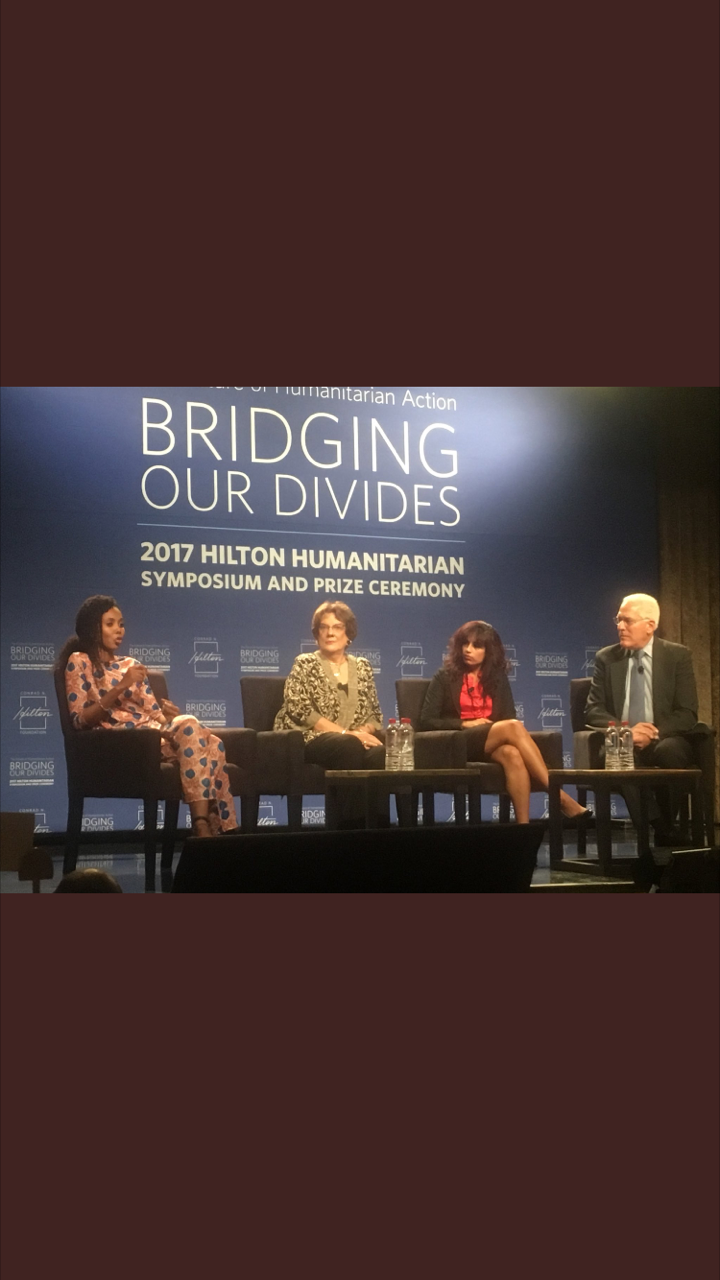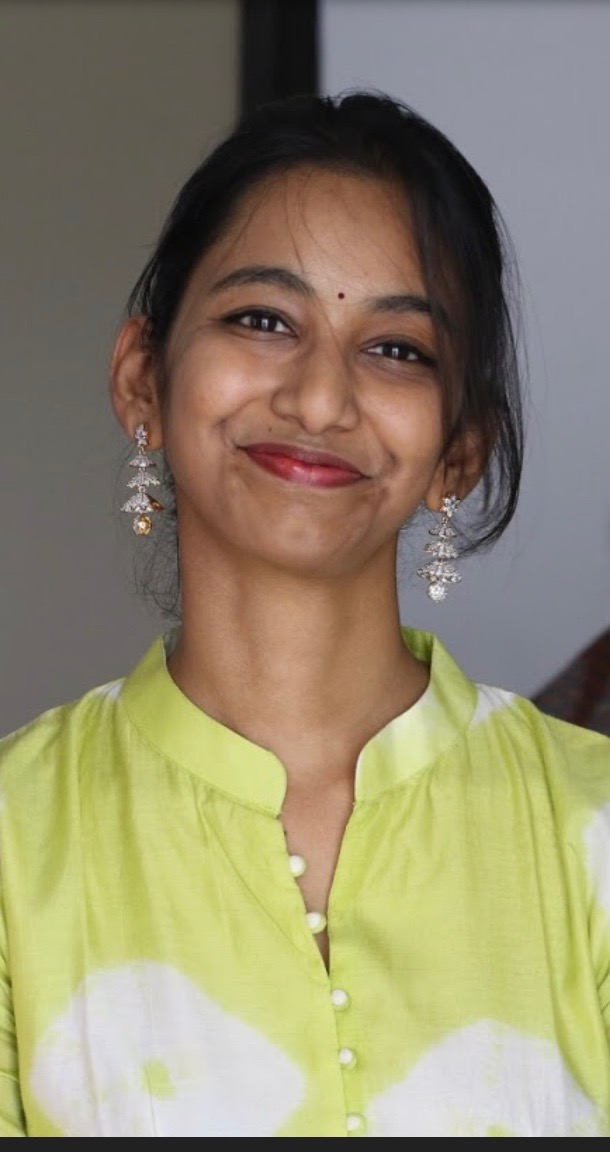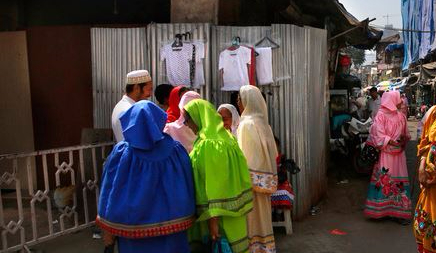છોકરીઓ માટેની ખતના પ્રથા શા માટે અપનાવવા આવે છે? દાઉદી બોહરા સમાજ સદીઓથી જાહેરમાં વાતચીત કર્યા વિના છૂપી રીતે બૈરાનીખતનાપ્રથા અપનાવી રહી છે, જે ફીમેલ જેનિટલ કટિંગ (એફ.જી.સી.) તરીકે પણ જાણીતી છે. ફક્ત પાછલા એક વર્ષથી, બોહરા આગેવાનો બોલી રહ્યાં છે કે શા માટે તેઓ સાત વર્ષની છોકરીના ક્લિટોરલ હૂડ ને કાપવાની પ્રથા અપનાવે છે. (બૈરાઓને સેક્સ્યૂઅલ આનંદનો અનુભવ કરવામાં મદદરૂપ થતા યોનિ અને મૂત્રમાર્ગ ની ઉપર આવેલ સંવેદનશીલ નસોવાળા ચામડીના બટન જેવા બંડલને ક્લિટોરિસ કહે છે અને ક્લિટોરિસને નુક્શાન થતું અટકાવવા તેના પરના આવરણને ક્લિટોરલ હૂડ કહે છે.)
જુન 2016માં, સયૈદના મુફદ્દલ સૈફુદિને એક પ્રેસ સ્ટેટમેન્ટ આપ્યું હતુ જેમાં તેમણે ખતનાને “ધાર્મિક શુદ્ધતા”ના કાર્ય તરીકે જણાવી છે. જે,પાછલા વર્ષે સહિયો સાથેની એક અંગત વાતચીતમાંસમાજના એક વરિષ્ઠ પ્રવક્તાએ આપેલા સ્ટેટમેન્ટ જેવું છે, તેમણે દાવો કર્યો હતો કે દાઈમ અલ ઈસ્લામ (10મી સદીનું ન્યાયશાસ્ત્રનું પુસ્તક) અનુસાર બૈરા અને મરદનાખતના પાછળનું મુખ્ય કારણ ફક્ત શારિરીક જ નહિં પરંતુ, “આધ્યાત્મિક” અને “ધાર્મિક” સ્વચ્છતા અથવા તહારત પણ છે.
ત્યારબાદ ફેબ્રુઆરી 2017માં, સમાજના એક વરિષ્ઠ પ્રવક્તાએ ધી હિન્દુસમાચારપત્રને એક અનામી મુલાકાત આપી હતી, જેમાં ફરી દાઈમ અલ ઈસ્લામ ની વાત કરી હતી. તે સિવાય, આ વખતે અનામી પ્રવક્તાએ જણાવ્યું હતુ કે ખતના “બૈરાના ચહેરા પરના તેજમાં અને તેણીના મરદ સાથેના સેક્સ્યૂઅલ સુખમાં વધારો કરવાનું” કાર્ય કરે છે.
હવે, જ્યારથી અમેરિકામાં ત્રણ બોહરાઓની એફ.જી.સી.ના આરોપ હેઠળ ધરપકડ થઈ ત્યારથી કેટલાક બોહરા બૈરાઓ જે ખતનાનું સમર્થન કરે છે તેમણે આ પ્રથાના બચાવમાં સોસિયલ મીડિયાનો સહારો લીધો છે. આ બધાબૈરાઓ દાવો કરે છે કે ખતનાસેક્સ્યૂઅલ ઉત્તેજના માટે અપનાવામાં આવે છે અને તે “વૈજ્ઞાનિક” અને “તબીબી” રીતે લાભદાયક છે કારણ કે તે “પશ્ચિમ દેશોમાં કરવામાં આવતી ક્લિટોરલ અનહૂડિંગ પ્રક્રિયા” જેવી જ છે. તેમાના કેટલાક બૈરાઓ એમ પણ દાવો કરે છે કે ખતનાજનનેન્દ્રિય (જેનિટલ) સ્વચ્છતા માટે અપનાવામાં આવે છે.
વધારે પડતા બોહરા બૈરાઓએ એક પેઢીથી બીજી પેઢીને ખતના પ્રથા આપતીવખતે, હજી સુધી આ રીતે તેનું પારંપરિક વર્ણન કર્યું નથી. પ્રોફેસર રેહાના ઘડિયાલીએ 1991માં, ઓલ ફોર ઈઝ્ઝત નામના એક આર્ટિકલમાં આશરે 50 બોહરા બૈરાઓના ઈન્ટરવ્યૂ લીધા હતા અને તેમાં ખતના માટેના સામાન્ય કારણો આ મુજબ જોવા મળ્યા હતા. ક) તે એક ધાર્મિક ફરજ છે. ખ) તે એક પરંપરા છે અને ગ) તે છોકરીની સેક્સયુઆલિટીને કાબુમાંરાખવા માટેઅપનાવામાં આવે છે.
ત્યારથી, કેટલાક સ્વતંત્ર સંશોધનકર્તા, કાર્યકર્તાઓ અને ફિલ્મ નિર્માતાઓને બોહરા બૈરાઓ સાથેની તેમની અસંખ્ય વાતચીતો દરમિયાન તેવા જ કારણો જોવા મળ્યા. બોહરા સમાજના મોટા ભાગના લોકોએ સતત દાવો કર્યો છે કે તેઓ તેમની છોકરીઓનું ખતના, તેમની સેક્સયુઅલ ઈચ્છાઓને કાબુમાં રાખવા અથવા તો ચૂપચાપ ધાર્મિક પરંપરાને અનુસરવા માટે અપનાવે છે. ઘણા બોહરા લોકો તો ક્લિટોરિસને “હરામ ની બોટી” અથવા પાપી માંસના ટુકડા તરીકે બતાવે છે.
સહિયોએ કરેલા 385 બોહરા બૈરાઓના રીસર્ચમાં પણ તેવા જ કારણો જોવા મળ્યા હતા. વધારે પડતા જવાબ આપવાવાળાઓએ દાવો કર્યો કે ખતના પ્રથાને પારંપરિક રીતે અથવા સેક્સયુઅલ ઈચ્છાઓને કાબુમાં કરવા માટે અપનાવામાં આવે છે, જ્યારે બહું ઓછાબૈરાઓએ “સ્વચ્છતા”, “તબીબી લાભ” અથવા “જાતીય સુખમાં વધારા”ને ખતના પ્રથાના કારણો બતાવ્યા હતા. 2012 માં ફિલ્મ નિર્માતા પ્રિયા ગોસ્વામિ, જ્યારે તેણીની ડૉક્યુમેન્ટરી પિંચ ઓફ સ્કિન નું રીસર્ચ કરી રહી હતી ત્યારે બોહરા ધાર્મિક સંસ્થાની એક મહિલા શિક્ષકે તો તેણીને સ્પષ્ટ રીતે જણાવ્યું હતુ કે ખતના પ્રથા પાછળનું મુખ્ય કારણછોકરીઓની સેક્સયુઅલ ઉત્તેજનાઓને કાબુમાં કરવાનો છે જેથી, તેણી શાદી પહેલાં અથવા પછી અન્ય કોઈ વ્યક્તિ સાથે સેક્સ્યૂઅલ સંબંધો ના રાખે.
તો, શા માટે આજકાલના ઓનલાઈન ખતનાવિરોધીઓ તેની ઉલટી હકીકત આપીરહ્યાં છે અને દાવો કરી રહ્યાં છે કે બૈરાનુંખતના તેણીના સેક્સ્યૂઅલ સુખમાં વધારો કરવા માટે અપનાવામાં આવે છે? ખતના પ્રથા પાછળનું સાચુ કારણ શું છે?
આ બાબતને સમજવા ચાલો આપણે, બૈરાના ખતના વિષે ઈસ્લામિક પુસ્તક શું કહે છે તે જોઈએ.
ખાસ કરીને ઈસ્લામના શફી, હનબલી અને હનફિની કેટલીક ખાસ હદીથો છે, જેમાં ખતનાને સ્વીકાર્ય, ઈજ્જતવાળુ અથવા તો એક સુન્નત (સલાહભર્યું) તરીકે બતાવી છે. વિશ્વના ઘણા ઈસ્લામિક વિદ્વાનો વર્ષોથી આ હદીથની સચ્ચાઈ પર પ્રશ્નો ઉઠાવી રહ્યા છે. પરંતુ, આપણે તેને સાચુ માનીએ તો પણ, આ હદીથ એ મુખ્ય સચ્ચાઈને પાકી કરે છે કે પેગંબર મહમ્મદના સમયમાં પણ અરેબિયન પ્રદેશોમાં પહેલાંથી જ ખતના પ્રથા ચાલુ હતી, ખતનાઈસ્લામમાં દાખલ કરેલી કોઈ નવી ધાર્મિક પ્રથા નથી.
એક હદીથ, સુનાન અબુ દાઉદ પુસ્તક 41, જેમાં વારંવાર સુનાન અબુ દાઉદની વાત કરવામાં આવી છે. તેમા નીચેની એક ખાસ બાબત સમાવિષ્ટ છે :
“ઉમ્મ અતિય્યાહ અલ-અન્સારિયા માંથી:
એક સ્ત્રી મદિનામાં ખતના કરતી હતી ત્યારે પેગંબરે (પી.બી.યુ.એચ.) તેણીને કહ્યું હતુ કે વધારે કાપીશ નહિં કારણ કે તે બૈરા માટે વધારે સારૂં હોય છે અને મરદ ને વધારેગમે છે.”
પેગંબર, સ્ત્રીને વધારે કાપવા અંગે સાવચેત કરે છે તે ઘટનાનુંઅલગ-અલગ વિદ્વાનોએ અલગ-અલગ રીતે અર્થ અને ભાષાંતર કર્યું છે. અમુક વિદ્વાનોએ તેનું ભાષાંતર એમ કર્યું છે કે “વધારે કાપશો નહિં કારણ કે તે બૈરાઓના સેક્સ્યૂઅલસુખ માટે છે અને મરદ દ્વારા તે વધારે પસંદ કરવામાં આવે છે”, જ્યારે અન્ય વિદ્વાનોએ તેનું ભાષાંતર એમ કર્યું છે કે “…તે ચહેરાના સૌંદર્યનું કારણ છે અને મરદ માટે તે વધુ આનંદદાયક છે.”
ધી પિલ્લર્સ ઓફ ઈસ્લામ (દાઈમ અલ-ઈસ્લામનું ઈસ્માઈલ પુનાવાલાએ કરેલુ અંગ્રેજી ભાષાંતર) ના વોલ્યુમ 1ના પેજ નં. 154 પર એક આવા જ વાક્યને એ રીતે ભાષાંતરીત કરવામાં આવ્યું છે કે “હે બૈરાઓ, જ્યારે તમે તમારી દીકરીઓનું ખતના કરો ત્યારે થોડો ભાગ છોડી દો (લેબિઆ અથવા ક્લિટોરિસનો ભાગ), તે તેણીના શુદ્ધ ચરિત્રનેબતાવશે અને તે બૈરાઓ તેમના મરદોને વધારે વહાલા લાગશે.” ઉપર બતાવેલ ધી હિન્દુ સમાચાર પત્રના એક ઈન્ટરવ્યૂમાં સમાજના એક પ્રવક્તાએ તેનું આવુ જ કંઈ ભાષાંતર કર્યું હતુ કે “બૈરાના ચહેરા પરના તેજમાં અને તેણીના મરદ સાથેના સેક્સ્યૂઅલ સુખમાં વધારો કરે છે”. (ઈટાલિક્સમાં આપેલ ભાગ ઉમેરવામાં આવ્યો છે.)
હું કોઈ અરેબિક વિદ્વાન નથી પરંતુ, આ અલગ-અલગ ભાષાંતર પરથી એ સ્પષ્ટ છે કે અલગ-અલગ અરેબિક અને ઈસ્લામિક વિદ્વાનોએ આ સંદેશનું થોડા તફાવત અને વિરોધાભાસ સાથે એક સરખો અર્થ કર્યો છે. અમુક લોકો તેને બૈરાના ચહેરાના “તેજ” અથવા “સૌંદર્ય” માં (જે તેણીના જાતિય સંતોષનો સંદર્ભ છે, અક્ષરશઃ તેજ નહિં) વધારો કરવાના રૂપે ભાષાંતરીત કર્યું છે, તોઅન્ય લોકોએ તેને બૈરા માટે “વધારે સારૂં” અથવા “શુદ્ધ” (જે તેણીની જાતિય શુદ્ધતાના સંદર્ભમાં હોય શકે છે) રૂપે ભાષાંતરીત કર્યું છે.
બધા મુસ્લિમો સહમત થશે કે જુની ઈસ્લામિક અરેબિકના શબ્દો વારંવાર અચોક્કસ અથવા ઘણા બધા અર્થોવાળા હોવાના કારણે તેને સમજવી સરળ નથી. પરંતુ, આ અચોક્કસતા આપણને એ સમજવામાં મદદરૂપ થઈ શકે છે કે, શા માટે બોહરા બૈરાની ઘણી પેઢીઓ માને છે કે ખતના બૈરાઓની સેક્સ્યૂઅલ ઈચ્છાને કાબુમાં કરવા માટે અપનાવામાં આવે છે અને શા માટે અન્ય બોહરા આ જ શબ્દોનો ઉપયોગ, એવો દાવો કરવા માટે કરી શકે છે કે ખતના સેક્સ્યૂઅલ સુખમાં વધારો કરવા માટે અપનાવામાં આવે છે.
હાલમાં જ ખતનાના ઉગ્ર સમર્થકો (સપોર્ટર) અને સુન્નિ ઈસ્લામિક વિદ્વાન આસિફ હુસૈન દ્વારા આ વિષય પર ચર્ચા કરવામાં આવી હતી. સ્પીક આઉટ ઓન એફ.જી.એમ.ના ફેસબૂક પેજ પરની એક ટિપ્પણીમાં તેમણે “સેક્સ્યૂઅલ સુખના વધારા” અને સ્ત્રીની શુદ્ધતા બન્ને વચ્ચેના સંબંધનો જીકર કર્યો છે. તેમણે કહ્યું છે કે :
“તે [ક્લિટોરલ હૂડ કાઢવું] સ્ત્રીને અવશ્ય સેક્સ્યૂઅલ સુખનો સંતોષ આપે છે અને તેથી, એ તેણીની શુદ્ધતાની ખાતરી કરે છે. પ્રાચીન કાયદાશાસ્ત્રીઓ એવા સંકુચિત લોકો નહોતા. તેમણે પેગંબરના આ એક વાક્ય પરથી તેના સાચા અર્થનું અનુમાન કર્યું છે.”
અન્ય શબ્દોમાં કહીએ તો, બૈરાના લગ્ન જીવન દરમિયાન તેણીના સેક્સ્યૂઅલ સુખની ખાતરી કરીને ખતના એ બાબતની ખાતરી કરશે કે તેણી સેક્સ્યૂઅલ સુખ માટે લગ્ન જીવનની બહાર જતી નથી. પેગંબરના શબ્દોના અલગ-અલગ અર્થ વચ્ચેનો આ સંબંધ સાચો લાગી રહ્યો છે અને જો તેને માનવામાં આવે તો, ખતના બૈરાના સેક્સ્યૂઅલ કાબુ મેળવવાસંબંધી બાબતપર કેન્દ્રિતછે.
પરંતુ, શું ખરેખર આપણે બૈરાઓની જાતિય ઈચ્છાઓને કાબુમાં કરવાની કે વધારવાની જરૂર છે?
છેલ્લે તમે કોઈપણ કારણ આપો તો પણ, છોકરીના અંગછેદનની પ્રથાને વાજબી ઠેરાવી શકાય નહિં, ભલે તે કેટલી પણ “નાની” પ્રક્રિયા હોય.
કોઈપણ વ્યક્તિને બૈરાની સેક્સ્યૂઅલ ઈચ્છાઓ પર કાબુ રાખવાનો અથવા તો તેણીને શુદ્ધ બનવાનું કહેવાનો અધિકાર નથી. આ બધા પુરુષપ્રધાન વિચારો છે જેનું આજના વિશ્વમાં કોઈ સ્થાન નથી. તેજ રીતે, કોઈ પણ વ્યક્તિને એક નાની છોકરીનું અંગછેદન કરી તેણીના ભવિષ્યના સેક્સ્યૂઅલ જીવનને સારૂં બનાવવાનો પ્રયત્ન કરવાનો અધિકાર પણ નથી. સાત વર્ષની ઉંમરની કન્યાઓ સાથે સેક્સ્યૂઆલિટી સંબંધી છેડછાડ બિલકુલ થવી જોઈએ નહિં, તેમને સેક્સ્યૂઅલ સુખઅથવા અલગ અલગ જનન અંગોના કાર્યોની પણ સમજ હોતી નથી. શા માટે આપણે તેમના જનનાંગોને સ્પર્શ કર્યા વિના જન્મથી કુદરતી રીતે જેવા છે તેવા જ રહેવા દેતાનથી?
યાદ રાખો કે ક્લિટોરલ હૂડ શરીરનો એક મહત્વનો ભાગ છે, તે ક્લિટોરિસને વધારે ઉત્તેજન, ઘર્ષણ અને જખમ સામે રક્ષણ આપે છે અને સેક્સ્યૂઅલ ઉત્તેજના દરમિયાન ક્લિટોરિસને ખુલ્લું કરવા તે સ્વાભાવિક રીતે જ પાછું ખેંચાય છે. ક્લિટોરિસને ખુલ્લું કરવા તેને કાપવું જરૂરી નથી. આપણા શરીરના અંગો સાથે બ્લેડથી છેડછાડ કરતા પહેલાં આપણે તેના સ્વાભાવિક કાર્યોને સમજવા જોઈએ.
જાણ્યા-વિચાર્યા વિના ખતનાને “પશ્ચિમ દેશોના” ક્લિટોરલ અનહૂડિંગ સાથે સરખાવાનો દાવો કરવાના બદલે, આપણે એ સમજવું જોઈએ કે પરવાનગી વિના નાની છોકરીઓ પર ક્લિટોરલ અનહૂડિંગ કરવામાં આવતુ નથી. કામોત્તેજના દરમિયાન પ્રીપ્યુસ ટિસ્યુ (ક્લિટોરલ હૂડ) અવરોધ પેદા થતો હોય તેવી સમસ્યા ધરાવતી, જાતિય સુખમાં એક્ટિવ (સક્રિય) અમુક જબૈરાઓ તેને પસંદ કરે છે.
છેલ્લે, જો તમને લાગતું હોય કે ખતના પ્રથા પાછળનું અસલી કારણ તાહરત છે તો યાદરાખો કે, શારિરીક સ્વચ્છતાને સાબુ અને પાણી દ્વારા સારી રીતે જાળવી શકાય છે અને “આધ્યાત્મિક” અથવા “ધાર્મિક” શુદ્ધતા પ્રાપ્ત કરવાનો મુખ્ય સ્ત્રોત વ્યક્તિના જનનાંગોમાં નહિં પરંતુ, તેમના વિચારો, શબ્દો અને કર્મોમાં હોય છે.
(This article was first published in English on May 19, 2017. Read the English version here.)







